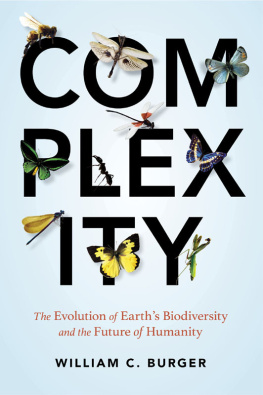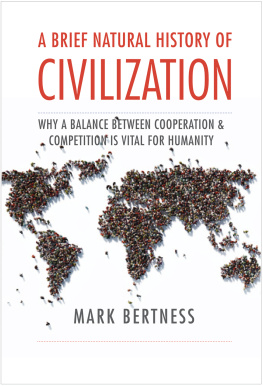
There is a bit of old gossip that continues to be retold amongst biologists. According to this tale, the eminent British biologist, J. B. S. Haldane, was attending a cocktail party when he was confronted by a prelate with a rather unusual question. Repeated ever since the late 1930s, this brief encounter has become a staple when discussing the diversity of life on our planet. The religious gentleman's question was: As a student of biology, Dr. Haldane, what can you tell us about the nature of God? Unfazed by the gravity of the question, the eminent biologist is said to have responded simply and directly: An inordinate fondness for beetles!
Yes indeed! The Creator seems to have a fondness for beetles. Why else would there be so many of them? At latest count, beetles number around 380,000 described species.all the conifers, as well as more than a quarter million flowering plants. Add all these green plants together and they still don't reach a number of species that can match the beetles. Returning to animals, there seem to be more species of beetles than there are species of all the non-microscopic animals living in all the oceans. This aquatic crowd includes jellyfish, many kinds of worms, mollusks of all sorts, lots of crabs, and thousands of fish species. Three-hundred and eighty thousand described species are a whole lot of species! And, as if that weren't trouble enough, their numbers keep growing as scientists discover new and undescribed species living high in rainforest trees, and even little ones hiding in the soil not far from where many of us live.
WHY ARE THERE SO MANY KINDS OF BEETLES?
Beyond God's pleasure, what might be the reasons for beetles being so numerous? Like so many puzzles in biology, this question elicits many answers. Surely, the first of many factors is the most obvious: beetles are little. The largest weigh about as much as a mouse, the smallest less than a fly. In strong contrast: there are fewer than a dozen species of rhinos and elephants alive in the world today. These are the largest and heaviest land animals, each requiring a range of many square kilometers in which to live and prosper. Beetles, on the other hand, can live their short lives within only a few square meters. Here we have a pattern seen throughout the living world: numbers of both individuals and species decline as the sizes of animals increase. Clearly, being small makes it possible to pack a lot of beetles into the same small area.
Small size is just one factor helping us understand the diversity of beetles. Beetles are found in many diverse habitats, carrying on a grand variety of life activities. Huge numbers live in both temperate and tropical regions; a few can be found in the tundra and on high mountains, but none are resident in Antarctica. We know how flour beetles can invade our kitchens, carpet beetles damage wool rugs, and Japanese beetles chew on garden plants. In a warm June evening, june bugs (really beetles) fly into our screens, while fireflies (also beetles) flash signals in the dark of early evening. In addition to a grand number of species, some beetle species have populations made up of millions of individuals.
In the American West, ladybird beetles (also called ladybugs) move high into the mountainsides and congregate together to spend the winter. During the early 1900s, collectors would go into the Sierra Madre highlands of California to collect these slumbering beetles, selling them to farmers in their battle against aphids. (Ladybird beetles, both larvae and adults, feed on aphids.) This collecting activity, in the early part of the last century, saw the gathering of several tonsthat's right tonsof beetles each winter. When you calculate that there may be 44,344,000 ladybird beetles in a ton of em, you've got a real lot of beetles. The take-home message is clear: by combining 380,000 species of beetles, with populations that may reach millions of individuals, it is no exaggeration to claim that our planet does indeed support billions of beetles. But what is it about beetles that have made them such a grand success?
Extinction is a constant erosive force in the history of life. A long fossil record tells us that perhaps 98 percent of all the species that ever lived are already long gone. Surviving changing climates, droughts, disease pandemics, and the occasional geological upheaval is a challenge a great majority of plants and animals have failed. Thus, when we see a lineage as successful as the beetles, we know they've got to be a well-adapted crowd. In fact, a simple glance at most any beetle will reveal their primary survival attribute: they are tough. Trekking over the leafy forest floor you can step on nearly any beetle, only to have it scurry away as you lift your boot. A hard exoskeleton amply protects a delicate interior! The key innovation here is that what was once a forward pair of wings became modified into hard wing covers (elytra) protecting the top of the entire abdomen.that, while most beetles can fly, they are neither fast nor agile. And that's why the larger ones fly only at night, avoiding the pursuit of predatory birds in the light of day. Being well protected, and with the ability to fly, gives them two significant advantages in the struggle for survival. But beetles have another trait that is even more significant.
A DIVIDED LIFE-HISTORY
Beetles belong to a large assemblage of insects with a four-stage life cycle; they undergo a complete metamorphosis (and are called holometabolous). Such insects have their lives divided into four separate and distinct stages. The first is the egg, which may be a short-lived stage, or it may be a means of surviving a harsh winter or a long dry season. At the appropriate time, the egg is broken open by its little occupant, a small larva. The larval stage is a significant part of the life cycle, being devoted entirely to eating and growing. Beetle larvae range from minute worm-like beings to the larger grubs we often find in soil and rotten wood, while others lead an active predatory life. Whether sedentary or active, this part of the life cycle is devoted to accumulating the energy needed to build the adult insect.
Becoming transformed from a fat grub to an elegant adult requires a separate stage: the pupa. While you may be more familiar with the pupae (plural of pupa) of butterflies and moths, all insects with a four-stage life cycle have this stage. It is within the pupal skin that much of the insect dissolves! That's correct: almost everything within their outer skin becomes liquefied. This fluid, reorganized by several special regions within the pupa, then develops into the fully adult beetle. A miraculous transformation, when you think about it, this is a significant factor in the success of many insect species. The adult can develop into a form completely distinct from its larva, able to fly off to find a mate and lead an entirely new and different life. In effect, beetles have two lives: a larval eating phase, and a travelling/reproductive mature phase. That's the good news. The bad news is that this life trajectory comes with a serious limitation: the adult can grow no more! The new adult is as big as it will ever become.
SCARABS AND BURYING BEETLES
Another significant aspect of beetle diversity is their many differing lifestyles. This allows different species of beetles to live in the same environment without getting in each other's way. For example, scarab or dung beetles spend much of their time looking for fresh dung. When they find it, a pair of beetlesmom and dadwill energetically create a spherical dung ball. The ball is rolled to a convenient site for burial, where the ball will house and nourish one of their larvae. Scarab beetles aren't likely to get in the way of burying beetles who busy themselves looking for the bodies of dead mice and birds. Burying beetles, like their scarab relatives, have complex behavioral traits to live their special lifestylesall geared to rearing another generation of beetles.
Next page














